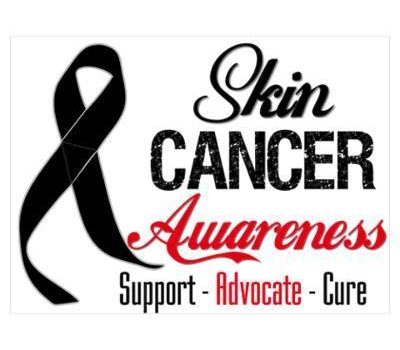 FUN IN THE SUN – KEEP IT HAPPY AND HEALTHY
FUN IN THE SUN – KEEP IT HAPPY AND HEALTHY
Hello everyone and welcome. It’s the merry month of May, spring is in full swing, and it’s also SKIN CANCER AWARENESS MONTH. So, it’s time to review the information regarding this cancer, the things that cause it, and the ways in which we can protect ourselves.
To begin, there are three types of skin cancer. In order of seriousness from least to most, they include basel cell, squamous cell and melanoma. Together, these three types make skin cancer the most common cancer in the world.
In fact, I’ve been diagnosed with skin cancer myself and I know first- hand that when this cancer is caught early it can be treated successfully. And even though I’ve been “skin cancer free” for a few years now, I have to remain vigilant in order to prevent a recurrence or, at the very least, to catch a new cancer early and treat it immediately.
So, let’s discuss some facts and tips about skin cancer that can help you protect yourself and your loved ones. And no matter what our age, sex or skin color, we need to arm ourselves with the proper information and learn the basics of skin cancer prevention.
First, skin cancer is caused by over-exposure to ultraviolet light or UV rays, which are an invisible kind of radiation that comes from the sun, tanning beds and sunlamps. These rays, of which there are three, penetrate skin cells, change skin texture, cause premature aging and wrinkling, damage the tissue and compromise the integrity of our DNA.
ULTRAVIOLET A (UVA)
This is the most common and dangerous type of UV ray. These rays travel deep into human skin and damage the skin’s connective tissue as well as its DNA.
ULTRAVIOLET B (UVB)
Most UVB rays are absorbed by the earth’s ozone layer, so they are less common and troublesome that UVA rays. They do not reach as deep into the skin as UVA rays, but they still can cause sunburn and damage our DNA.
ULTRAVIOLET C (UVC)
These rays can be extremely dangerous to living tissue. Fortunately, however, they are absorbed completely by the earth’s ozone layer and as a result, pose no threat to human skin in everyday situations.
Okay, so UVA and UVB are the types of UV rays that cause the most damage to our skin. Now, for a few more facts we need to know:
1) Both UVA and UVB rays occur outdoors and indoors.
2) Both can penetrate glass.
3) Both can reach you on cloudy, hazy days as well as bright, sunny days.
4) And, both reflect off water, snow, sand and even cement.
Now, let’s move on to the 6 different types of skin and how each is affected by these rays in order from the most sensitive skin type to the least sensitive.
1) Always burns, never tans.
2) Burns easily, tans minimally.
3) Burns moderately, tans gradually to light brown.
4) Burns minimally, tans well to moderately brown.
5) Rarely burns, tans easily to dark brown.
6) Never burns, dark pigmentation.
 Clearly, those with skin types 1 and 2 are at the greatest risk for developing all skin cancers, while those with skin types 5 and 6 have the least risk.
Clearly, those with skin types 1 and 2 are at the greatest risk for developing all skin cancers, while those with skin types 5 and 6 have the least risk.
Always remember, however, that everyone is at risk for skin cancer, even those with dark skin that never burns. And skin cancer can also occur on parts of the body that rarely see the sun or UV rays, including the skin between our toes and the soles of our feet.
Yet, you now have a foundation of knowledge and the tools to help protect yourself from this common cancer. You know what UV rays are. You know where they’re found and how they affect the environment. And, you know the type of skin you have and how sensitive it is to these different rays.
After all the months we’ve all spent indoors, at home, isolated, I for one can’t wait to renew my relationship with the outdoors, nature, my family and friends. Let’s just make sure we enjoy our time outdoors, with fresh air and warming sunshine in a responsible and healthy way.
With that, I wish everyone a wonderful and rejuvenating spring, and I thank you for joining me! Until next time, stay safe, stay in GOOD HEALTH and . . .
TAKE THE COURSE AND TAKE CHARGE!



Leave a Comment